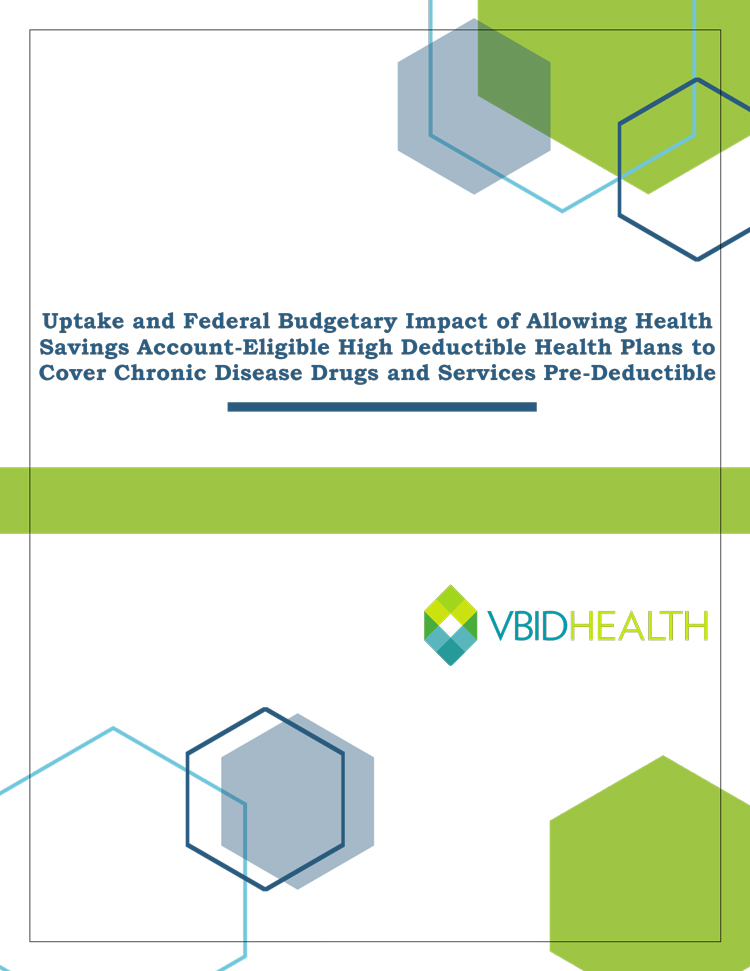Uptake and Federal Budgetary Impact of Allowing Health Savings Account-Eligible High Deductible Health Plans to Cover Chronic Disease Drugs and Services Pre-Deductible
June 2019
Executive Summary
High-deductible health plans (HDHPs) can be harmful for people with chronic conditions or low income. Evidence suggests that health plan flexibility to cover chronic disease prevention drugs and services pre-deductible in HDHPs would improve the health of those with chronic conditions and prevent downstream costs for services such as emergency department visits and hospitalizations. Reducing financial barriers to evidence-based care for chronic conditions therefore offers an opportunity to substantially enhance clinical outcomes and reduce the long-term rate of healthcare spending growth. However, the net budgetary impact to the federal government of implementing a policy that permits Health Savings Account-eligible (HSA-eligible) HDHPs to expand secondary prevention coverage is unknown.
Accordingly, this paper aims to predict 1) how enrollees might switch plan types (i.e., “migrate”) following the introduction of a High-Deductible Health Plan + Secondary Prevention Coverage (“HDHP+”) in the employer and individual markets, and 2) the resulting implications for federal tax revenues and expenditures of this “migration”. The paper concludes that the net effect of migration across plan types results in significant HDHP+ uptake, leading to modest net savings to the federal government in three of four scenarios of employer behavior. The potential savings are largely driven by the reduction in tax expenditures as a result of people moving away from Preferred Provider Organization plans (PPOs) to the HDHP+ (“buy down”), which outweighs the tax revenue loss of migration to the more generous HDHP+ from traditional HDHPs (“buy up”). The important take-away is not the magnitude of savings for any one scenario, but the clustering of the different scenarios about budget neutrality.
Therefore, we can be relatively confident that flexibility to allow HSA-HDHPs to cover services or drugs intended to treat an existing illness, injury, or condition would likely save, if not be cost-neutral to the federal government (Figure A).

Conclusion
Given the growing nature of the HSA-HDHP market, improvements to law or regulation to allow pre-deductible coverage for chronic disease prevention could materially improve the lives of those living with chronic conditions. HDHP+ plans offer a unique solution to health care spending while simultaneously benefiting those at the greatest risk of adverse health outcomes – with no effect on the health of others. Based on our modeling, people would choose to purchase such a plan if it were available. We can be confident that the flexibility to expand secondary prevention would be, at worst, budget neutral for the federal government, and at best, result in savings.
Support for this brief was provided through an unrestricted grant from the National Pharmaceutical Council.

